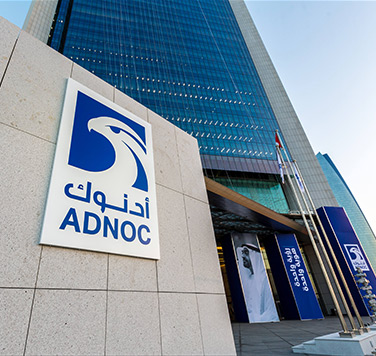
ADNOC Achieves Carbon Intensity at Shah Oil Field Enabled by AI
London, January 24, 2025, (Oilandgaspress) –––ADNOC announced today that its onshore Shah Field has achieved an industry-leading carbon intensity of 0.1 kilograms of carbon dioxide equivalent per barrel of oil equivalent (kgCO2e/boe), setting a benchmark among global oil fields. This milestone achievement underscores ADNOC’s commitment to producing some of the world’s least carbon-intensive oil and gas.
ADNOC’s Shah oil field, which is located 230 kilometers south of Abu Dhabi, has a production capacity of approximately 70,000 barrels of crude oil per day (kpbd), enough to fuel more than one million cars in the UAE. The field reached this milestone through optimized field development, deployment of digitalization, artificial intelligence (AI) and advanced technologies to maximize efficiencies and minimize emissions. The field also benefits from ADNOC’s electrification of its onshore assets, which are powered by nuclear and solar energy sources.

Musabbeh Al Kaabi, ADNOC Upstream CEO, said: “Technology is essential to ADNOC’s journey towards net zero, and this milestone at Shah demonstrates our commitment to sustainability and innovation. By leveraging advanced solutions including AI, digitalization, remote operations and predictive data analytics, we are optimizing operational performance while significantly reducing emissions, reinforcing our position as provider of some of the world’s least carbon-intensive oil and gas. We will continue to innovate to decarbonize our operations and future-proof our business while ensuring a reliable energy supply to meet global demand.”
Technologies deployed at the field include liquid ejector technology – an advanced system designed to recover and reuse gas that would otherwise be wasted, saving power and reducing emissions – and ADNOC’s AI-enabled Centralized Predictive Analytics Diagnostics (CPAD) program, which reduces maintenance and downtime while enhancing operational efficiency and safety.
ADNOC achieved an upstream carbon intensity of ~7kgCO2e/boe in 2023 – placing the company in the top tier of the lowest-carbon-intensity oil and gas producers in the world – and a 6.2 million tonnes CO2e reduction in scope 1 and 2 emissions, including approximately 4.8 million tonnes from using clean grid energy from solar and nuclear power.
Information Source: Read More
Oil and gas press covers, Energy Monitor, Climate, Gas,Renewable, Oil and Gas, Wind, Biomass, Sustainability, Oil Price, LPG, Solar, Marine, Aviation, Fuel, Hydrogen, Electric ,EV, Gas,

